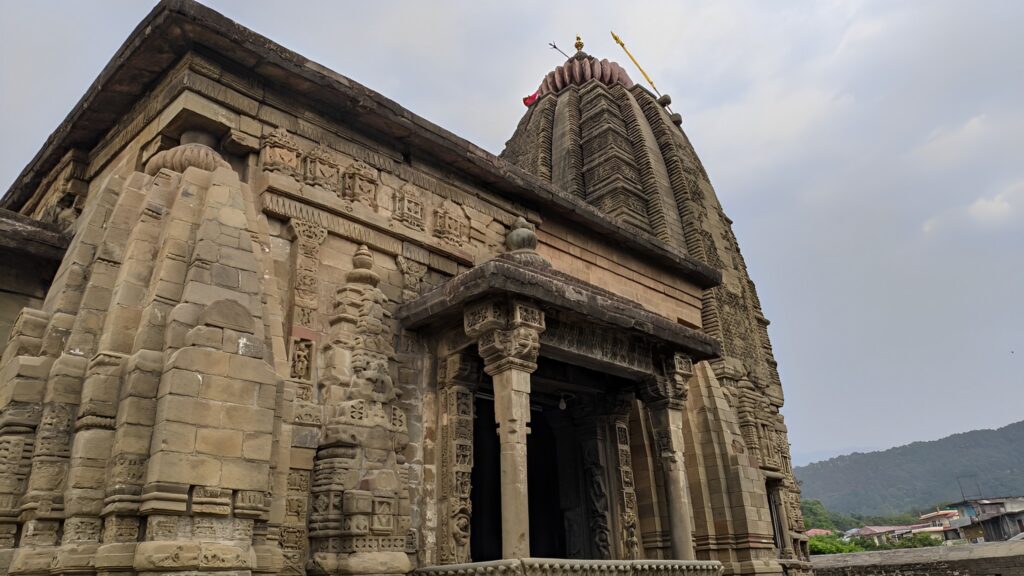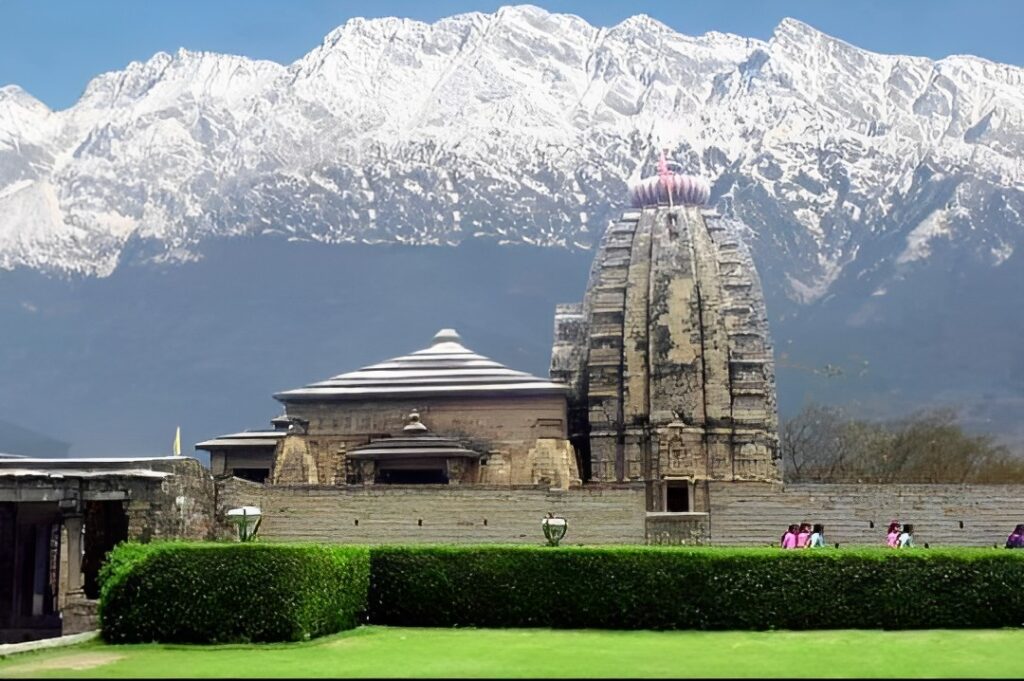
Baijnath Temple, one of the famous 12 Jyotirlingas, is located in the Kangra district of Himachal Pradesh. Thousands of devotees visit the Baijnath temple throughout the year to seek relief from their troubles and pains. Shiva is worshipped as the god of healing in the form of Baijnath or Vaidyanath.
Akula and Manyuka, the two merchants, built the temple in 1204 AD. In the background, the mighty Dhauladhar piercing the sky gives a different feeling of satisfaction.
In India, there are 12 Jyotirlingas that were established by Shiva. It represents a pure light that has no beginning and no end, and whose ends, Lord Vishnu and Brahma, cannot be identified.
Legend
A Baijnath Temple is a place where both Lord Shiva and Ravana are worshipped. According to legend, King Ravana was a sworn devotee of Lord Shiva. He wanted to be king of mainland Sri Lanka. He dedicated himself to shiva and resolved to do penance. He cut off his 10 heads and offered them to Lord Shiva.
Delighted by him, Shiva reinstated all his heads and offered to make one more request. Obliged by this, Ravana asked Shiva to accompany him to Sri Lanka. Shiva agreed, but only in shivling form.
Meanwhile, Lord Vishnu and Brahma become worried that the combination of the power of Shiva and Ravana’s strength could make Shiva unbeatable.
So, Lord Vishnu made a plan to stop Shiva from traveling to Lanka. Vishnu forced Ravana to attend to nature’s call while he was flying with Shivling by blowing a cold wind. Meanwhile, Ravana gave the custody of Shivling to a beggar for some time while he attended to nature’s call. Lord Vishnu, who was in beggar disguise, immediately put down the Shivling on the ground and attached it to it, making it immovable. This place is now called Baijnath Temple.

Architecture of Baijnath Temple
The temple architecture reflects a combination of Nagara (North Indian) and Orissa. Mandap has two entrances, one north, and one south, with balconies on both sides. Before the mandap, there is a small verandah based on four columns. In the verandah, the Vahaan of Lord Shiva rests. inner sanctum houses the Shivling. The walls of the temple are inscribed with beautiful paintings and drawings.
The temple’s history is inscribed on the stone walls, which tell the story of the temple. Beautiful, lush gardens around the temple just add beauty to the place.
How to Reach Baijnath Temple
By Road:
Baijnath Temple is well connected by road. The nearest bus stand is in Baijnath town, which is about 2 km from the temple. Regular buses and taxis are available from major cities in Himachal Pradesh, such as Dharamshala, Palampur, and Kangra. The temple is situated on the NH-154, which is well-maintained and makes it easy to reach the temple by road.
By Train:
The nearest railway station to Baijnath Temple is in the city of Pathankot, which is about 120 km away from the temple. From Pathankot, you can take a taxi or a bus to reach Baijnath. Another option is to take the narrow gauge train from Pathankot to Baijnath Paprola railway station. The train journey is a scenic one, passing through beautiful valleys and mountains, but it takes more time than by road.
By Air:
The nearest airport to Baijnath Temple is the Gaggal Airport in Dharamshala, which is about 50 km away. From the airport, you can hire a taxi or take a bus to reach Baijnath. The airport is well-connected to major cities in India such as Delhi, Mumbai, and Bangalore.
